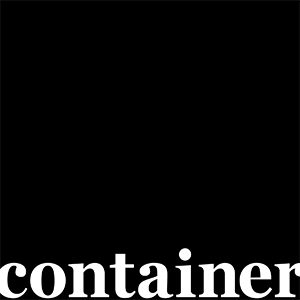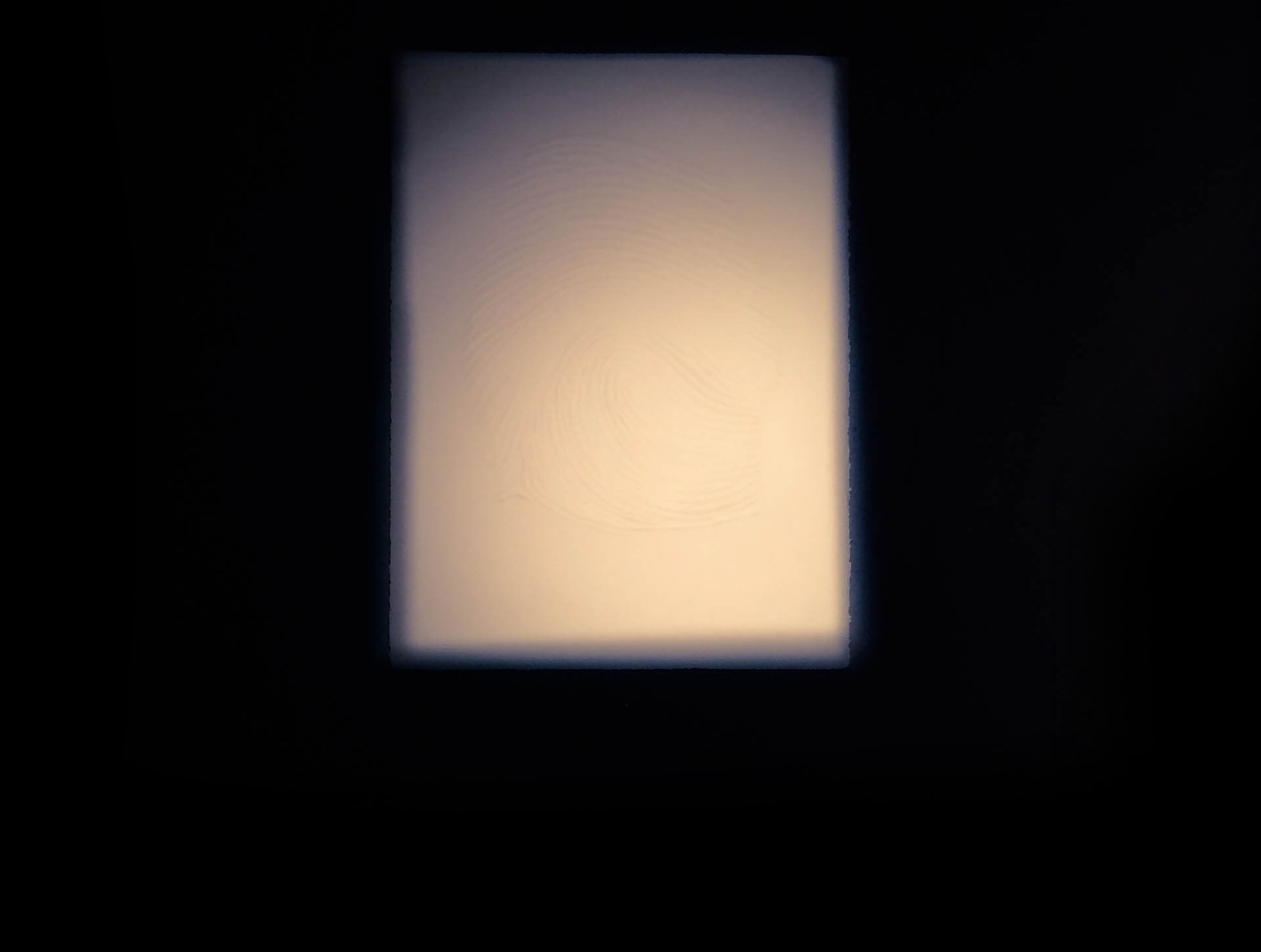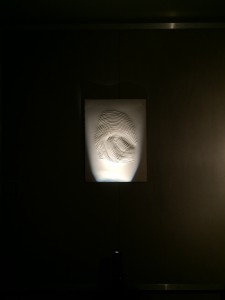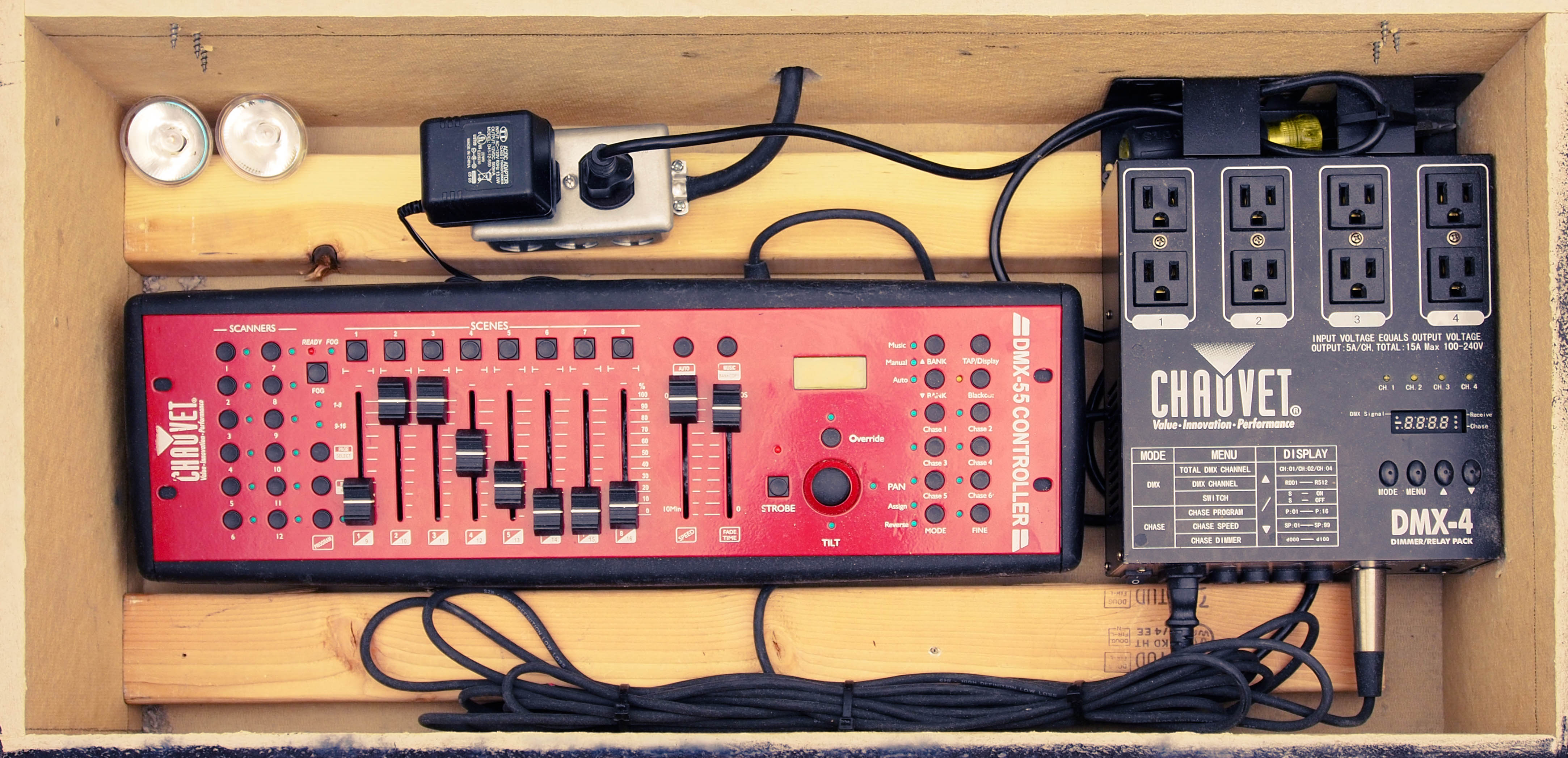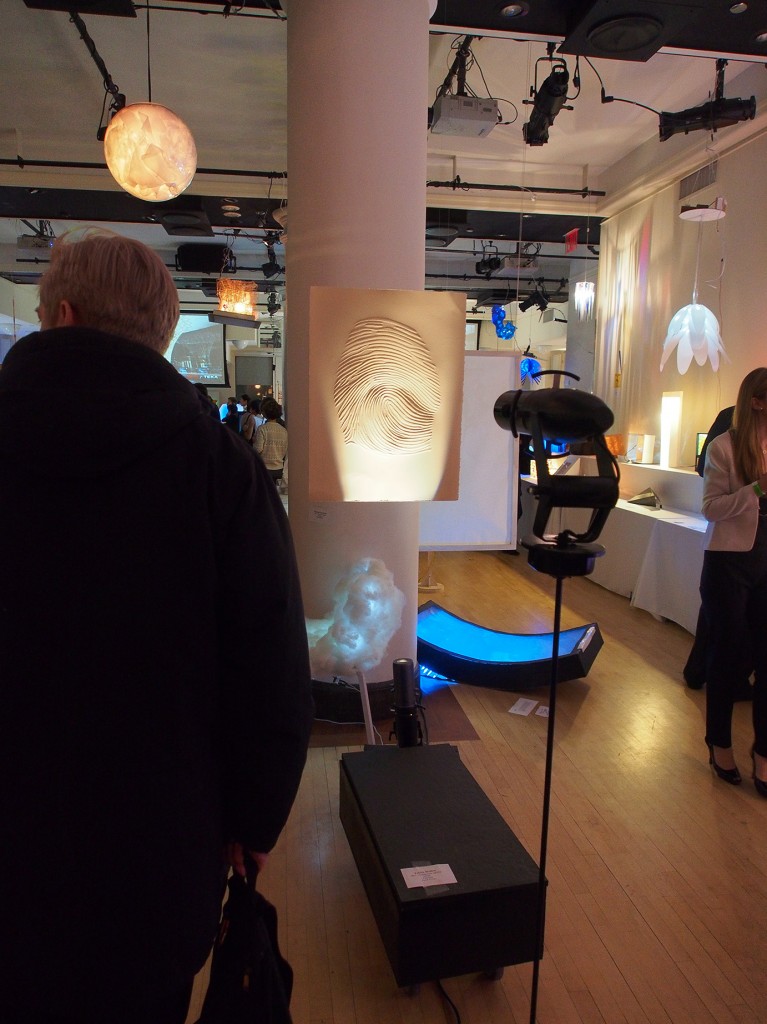Tobias Holden was late. This was his first time submitting work to the NYC Illumination Engineering Society’s Student Lighting Competition. Setup began at 8:00 a.m. and was scheduled to run the entire day, so when he showed up at 9:00 a.m., Holden believed he’d be one of the early arrivals. This was not the case.
Each year, the Illuminated Engineering Society’s New York Section hosts a student lighting design competition. While the range of submissions is vast both in scale and concept, the competition is reined in by oft-esoteric themes, ranging from “Liminal Luminosity” and “IllumiNotes” to this year’s “Light Touch.”
Holden’s submission exemplifies the theme “Light Touch” in a manner at once analogous in presentation and literal in approach. Suspended in space, the only physical body is a single sheet of cold-press watercolor paper with the pattern of Holden’s thumb engraved in positive relief. Holden chose the material expressly for its texture which, reacting to the quality of lighting cast upon it, alternately embellishes or obscures the embedded pattern.
Back in the IESNYC showroom, much of the exhibition space had been occupied by earlier arrivals, forcing Holden to hang his piece from an overhead pipe. This innovation worked in his favor by eliminating any cast-shadow effects which would have been produced against a backdrop. In the darkened showroom, the piece floated as though of its own accord, further amplifying its ephemeral qualities.
Holden continuously returns to an approach which he refers to as “working with two brains.” He is as concerned with light fixtures and their effects (top-down) as with the effects imposed upon the lighting itself by the lit objects (top-up). This is a reciprocal relationship often neglected by traditional approaches to lighting design. Holden’s approach to design reflects a sensibility that is widely lauded yet seldom actualized: good design makes apparent the object rather than its designer. Says Holden,
“I liked the idea that lighting design is this ‘quiet art,’ that if you do it well no one acknowledges it.”
That said, his designs haven’t always tended towards the minimal and reductionist. Holden’s first concept for the project was more elaborate:
“I did lots of hands-on experimentation; I was trying to figure out what a ‘light touch’ meant to me. I thought back to some of my more technical classes, how light can change the appearance of a material or how certain fixtures generate heat inherently in their operation. My initial concept was [to use] a super-hot par-lamp – around 250W – that would give off enough heat to drive a turbine.”
The spinning turbine would in turn influence the light cast by the lamp. Unfortunately, he found that far more energy would be needed to drive the turbine than could be created by the fixture.
“But then,” Holden continues, “I thought of the really simple concept of [how] the incident angle [of light] on a surface reveals or destroys texture. …The lighting mechanics was easy…creating the texture involved lots of experimentation.”
BRANDON PIETRAS
